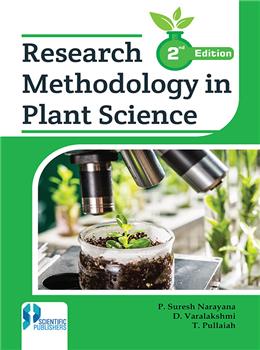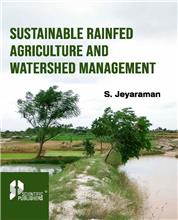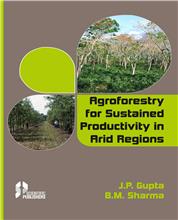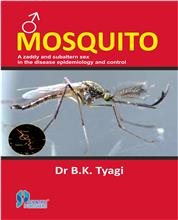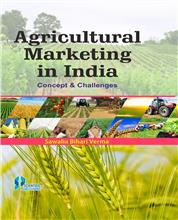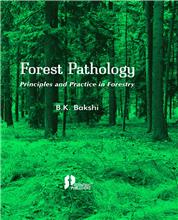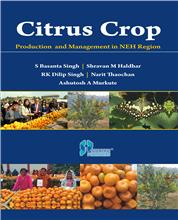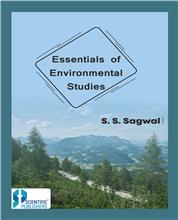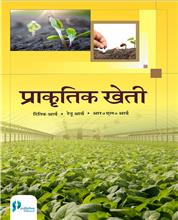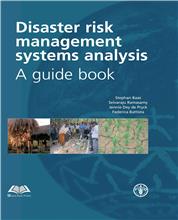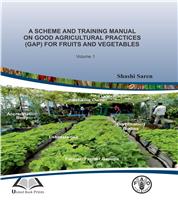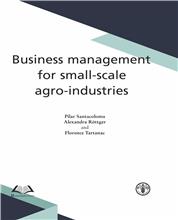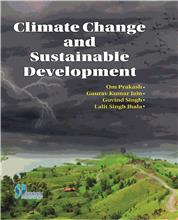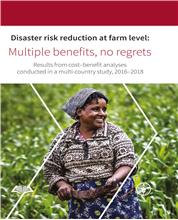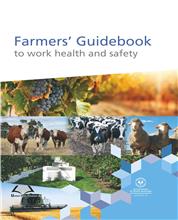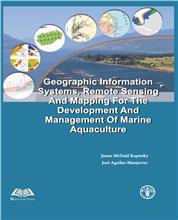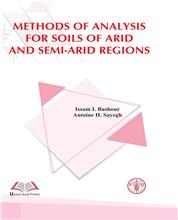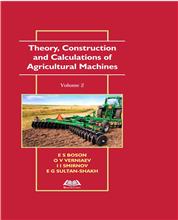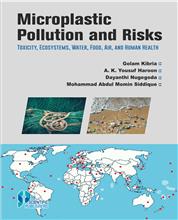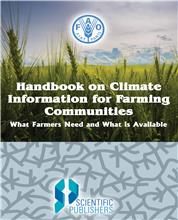Preface
1. RESEACH METHODOLOGY
Introduction
Research - What it is?
Aim and Purpose of Research
Early History of Research
Types of Research
Possible Motives for Doing Research
Methodology - What it is?
Types of Research Methodology
Research Design
Research Plan
Concepts and Context of Research
Research Logistics
Research Methods versus Research Methodology
Research Proposal
Different Stages of Research
Criteria for Good Research
Objectives of Research
Why do people carry out Research?
Importance of Research
Significance of Research
2. CENTRIFUGATION
Introduction
Centrifugation - Definition
Types of Centrifugation
Preparative Ultracentrifugation - Separation Methods
Centrifuge - The Instrument
Centrifuge - Components and Parameters
Centrifuge - Operation
Common Centrifuges Used in Biological Sciences
Centrifuges - Types
Centrifuges - Classification
Ultracentrifuge - Basic Principle
Preparative Centrifugation - Types of Rotors
Rotors - Selection
Rotors and Accessories - Care
Centrifuge - Containers
Density Gradient Separation - Formation and Choice of Density Gradients
Gradient Material - Nature and Use
Suitable Density Gradient Medium - Selection
Fractions - Collection
Sample Application to the Gradient
Recovery and Monitoring of Gradients
Analysis of Sub-cellular Fractions
Presentation of the Results
Analytical Ultracentrifuge - Applications
Centrifuges - Safety Aspects in Use
Centrifugation - Applications in Biological Research
Many Uses of Centrifuge
3. PLANT TISSUE CULTURE
Introduction
Plant Tissue Culture - Materials and Methods
Explant
Aseptic Environment
Tissue Culture Media or Nutrient Media
Nutritional Composition of Most Common Plant Cell/Tissue Culture Media (Angiosperms)
Composition or Components of Tissue Culture Media
General Technique of Plant Tissue Culture
Plant Tissue Culture Protocol (General)
Plant Tissue Culture - Laboratory and Equipment
Methodology for the Establishment of Cultures
Types of Plant Tissue Culture
Applications of Plant Tissue Culture
4. ELECTROPHORESIS
Introduction
Definition
How Separation Occurs in Electrophoresis?
Requirements for Electrophoresis
Basic Principles of Electrophoresis
Electrophoresis - Method
Factors that affect Electrophoresis
Physical Background of Electrophoresis
Instrumentation for Electrophoresis
Electrophoresis – Apparatus
Theory of Electrophoresis
Types of Electrophoresis
Specific Techniques of Electrophoresis Commonly Used in Biochemistry
Detection Methods – Blotting
Electrophoresis – Applications
RECENT ADVANCES IN ELECTROPHORESIS
Introduction
Non-linear Frictiophoresis or Non-linear Electrofrictiophoresis
ZIFE (Zero Integrated Field Electrophoresis)
Pulsed - field Gel Electrophoresis (PFGE)
Isotachophoresis (ITP)
Transient Isotachophoresis (tITP)
Multi-junction IEF System
Dielectrophoresis (DEP)
Optical Dielectrophoresis
Affinity Electrophoresis
Difference Gel Electrophoresis (DIGE)
Discontinuous Electrophoresis (colloquially Disc Electrophoresis)
Microfluidic Chip-based Electrophoresis
Iontophoresis
Temperature Gradient Gel Electrophoresis (TGGE) and Denaturing Gradient Gel Electrophoresis (DGGE)
Free Flow Electrophoresis (FFE) or Carrier-Free Electrophoresis
New Technique to Separate Microsatellite Alleles
Conclusion
5. HERBARIUM TECHNIQUE
Herbarium - What it is?
Plant Collection
Why Preserve Plant Specimens?
Preservation of the Plant Specimens
Equipment Needed for Collection of the Plant Specimens
Method to keep Wet Plant Material in Adverse Conditions
Methods of Drying the Plant Specimen
What Makes a Good Specimen?
The Data to be recorded in the Field Note Books
Mounting of the Dry Plant Specimens
Labeling the Plant Specimens
Filling or Arrangement of the Plant Specimens
Special Care of the Plant Specimens
Safe Storage of the Sheets / Specimens
Safe Preservation of the Specimens (Plants)
Use and Significance of the Herbarium
Role of Herbarium in Modern Plant Taxonomy
6. CHROMATOGRAPHY
Introduction
Definition
Principle
Chromatography - Early History
Classification of Chromatographic Methods
Special Techniques of Chromatography
Hyphenated (Hybrid) Techniques and Alternative Methods of Detection in Chromatography
Chromatography - Basic Principle
Types of Chromatography
Adsorption Chromatography
Partition Chromatography
Planar Chromatography
General Procedure - Paper Chromatography (PC)
Thin Layer Chromatography (TLC)
High Pressure Liquid Chromatography (HPLC) or High Performance Liquid Chromatography
General Procedure - High-Performance Liquid Chromatography (HPLC)
Chromatography - Applications
Chromatography - Applications in Biology and Chemistry
Chromatography - Uses in Pharmacognosy
Chromatography - Applications for the Analysis of Herbal Drugs
Chromatography - Latest and Advanced Techniques
Evolution of Chromatography
Chromatography - Improvements - Multi-dimensional Analysis
Dye-Ligand Chromatography
Hydrophobic Interaction Chromatography (HIC)
Pseudo-affinity Chromatography
Immobilized Metal Affinity Chromatography (IMAC)
Perfusion Chromatography (PC)
Supercritical Fluid Chromatography (SFC)
Expanded Bed Adsorption (EBA) Chromatography
Nanoflow Liquid Chromatography (NLC)
Micellar Liquid Chromatography (MLC)
Electrochromatography
Capillary Electrochromatography (CEC)
Weak Affinity Chromatography (WAC)
High Performance Liquid Chromatography (HPLC)
Conclusion
Hy-phe-nated Techniques or Hybrid Techniques
Hy-phe-nated HPLC (High-performance Liquid Chromatography) Methods
7. BOTANICAL MICRO-TECHNIQUE
Introduction
Killing and Fixation
Embedding the Material in Paraffin
Stains and Staining Methods
Procedure of Staining
Dehydration of the Material
Clearing the Sections
Dewaxing the Sections
Mounting the Material on to the Slide
Adhering Sections to the Slides
Ringing the Slide / Sealing the Cover slip
Slide Label - Preparation
Free Hand Sections or Sectioning by Hand
Free Hand Sectioning - Procedure
Epidermal Peeling - Preparation
8. MICROSCOPY
Introduction
Microscopy - Definition
Types of Microscopes
Optical (Light) Microscope
Electron Microscope
Scanning Electron Microscope (SEM)
Transmission Electron Microscope (TEM)
Scanning Probe Microscope (SPM)
Optical or Light Microscopy
The Compound Light Microscope
Electron Microscope
Cytophotometry or Microfluorometry
Phase Contrast Microscopy (PCM)
Fluorescence Microscopy (FM)
Scanning Electron Microscopy (SEM)
Transmission Electron Microscopy (TEM)
Electron Microscopy (EM)
9. SMEAR AND SQUASH TECHNIQUE
Introduction
Smear and Squash
Squash Technique for Root Tips - Protocol
Preparation of the Onion Root Tip Squash
Chromosome Squash Technique
Preparation of the Anther Smear
10. SPECTROPHOTOMETRY
Introduction
History and Spectrophotometry
Spectrophotometer - Definition
Spectrophotometer - Components
Spectrophotometer - Design of the Device
Spectrophotometer - Basic Principle
Using Spectronic-20 Spectrophotometer
Spectrophotometers - Different Types
Spectrophotometer - Source of Light
Spectrophotometer - Methods of Measurement
Spectrophotometer - Uses
Spectrophotometer - Applications
Colorimeter and Spectrophotometer - Differences
11. COLORIMETRY
Introduction
History and Colour/Colorimetry
Colorimetry - Definition
Colorimeter - The Instrument
Principle of Colorimetry
Chemistry of Colorimetry
Colorimeter - Operational Procedure (Experimental Method)
Colorimetry - Chemical Method
Absorption Colorimeter
Photo-Electric Colorimeter - Operation
Colorimetric Assays
Precautions to be taken in Colorimetry
Factors that affect/influence Colorimetric Measurements
Advantages and Disadvantages of a Colorimeter
Uses of Colorimeter
Colorimetry - Applications in Plant Sciences
Colorimetry - Applications in Other Fields
12. HYDROGEN-ION CONCENTRATION (pH)
Introduction
Earliest pH Meter - Litmus
Hydrogen Ion Concentration (pH)
Measurement of pH
pH Meter
pH Meters - Types
Accurate Measurement of pH
pH Indicators
Buffers and Buffer Solutions
Determination of pH
Care and Use of pH Meter
pH Electrode / pH Meter
pH Scale
Uses of pH Meters
pH Meters - Advantages and Disadvantages
pH Controller
Calibration of pH Meter - Why?
Care of pH Electrodes
pH Measurement - Applications
pH in Nature
pH and Life
xiv Research Methodology in Plant Science
13. MICROTOMY AND MICROTOME
Introduction
History and Microtomy
Parts of a Microtome
Proposed Classification (Types) of Microtomes
Microtome - Knife Design and Cut Types
Sharpening of the Knives
Method of Sectioning by a Microtome
Maintenance of a Microtome
Applications of a Microtome
Conclusion
14. BIOSTATISTICS
Introduction
History and Biostatistics
Scope of Biostatistics
Principles of Experimental Design and Statistical Inference
Tabular Design
Tabular Presentation of the Raw Data
Tabular Presentation of Data
Types of Tables
Best Practice of Presenting the Table
Graphical Design
Diagrammatic Representation of Data
Statistical Method - Types
Data (Information) - Types
Central Tendencies - Measures
Averages
Standard Deviation (SD)
Correlation Coefficient
Standard Error of Mean (SEM) and its Applications
Standard Deviation (SD) and Standard Error (SE)
Confidence Interval (CI) or Fiducial Limits
Distribution - Types
Null Hypothesisμ
Errors - Types
Level of Significance
Outliers
One - tailed and Two - tailed Test
Determination of Sample Size - Importance
Power of Study
Choosing an Appropriate Statistical Test
Common Problems Faced by the Researcher
Software for Biostatistics
Statistical Applications in Biological Research
Biostatistics - Applications
Recent Development in Modern Biostatistics
15. COMPUTERS IN LIFE SCIENCES
Introduction
Computer - Basic Principles
Computer - Parts
Computers - Types according to Size and Power
Brief History of Computing
Computers - Applications in Life Sciences
Computers in Agricultural Research
Computers and Plant Sciences
Importance of Computer Literacy and Useful Software for Students and Researchers in Life Sciences
16. APPLICATIONS OF RADIOISOTOPES IN BIOLOGY/PLANT SCIENCES
Introduction
Radioactive Isotopes
Half-Life (t1/2)
Half-life in Biology and Pharmacology
Radioactive Tracers
Tracer Studies / Tracer Techniques
Instruments to Measure Ionizing Radiation
Geiger-Muller Counter (GM Counter)
Scintillation Counter
Radioactivity - Applications in Life Sciences
Radioisotopes - Applications in Plant Sciences
Radioisotopes and Agriculture
Radioisotopes - Applications in Agriculture
Stable Isotopes - Use in Agriculture
Radioisotopes - Uses in Molecular and Cell Biology
Conclusion
17. BIOINFORMATICS
Introduction
Definition
History and Bioinformatics
Bioinformatics - Concept and Goal
xvi Research Methodology in Plant Science
Bioinformatics - Relevance to Biotechnology
Bioinformatics - Important Thrust Areas
Bioinformatics - Uses
Goals of Bioinformatics
Approaches of Bioinformatics
Bioinformatics in relation to other fields
Conclusion
18. POLYMERASE CHAIN REACTION (PCR)
Introduction
PCR - What it is?
PCR - Principle
PCR - General Protocol
PCR - Different Schemes and Types
Applications of PCR in Different Disciplines
PCR - Benefits, Drawbacks and Limitations
Conclusion
19. PHOTON COUNTING AND PHOTO-MULTIPLIER TUBES (PMTs)
Introduction
Photon Counting
Photomultiplier Tube (PMT)
Photomultipliers - Properties
Photomultipliers - Modification
Photon Counting: SPCMs, CPMs and CCDs: Which Technology Works Best?
The 3 - Technologies
SPCMs (Single Photon Counting Modules)
CPMs (Channel Photo Multipliers)
CCDs (Charged Coupled Devices)
Photon Counting Mode (Analog and Digital)
Photon Counting Methods
Detectors for High Speed Photon Counting
Photon Counting Techniques
Detector Principles
Photon Detection - Uses
Photon Counting - Applications
Photon Counting - Benefits
Conclusion
REFERENCES
